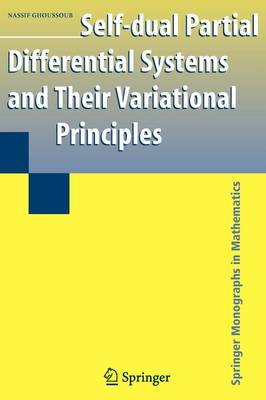How to solve partial differential systems by completing the square. This could well have been the title of this monograph as it grew into a project to develop a s- tematic approach for associating suitable nonnegative energy functionals to a large class of partial differential equations (PDEs) and evolutionary systems. The minima of these functionals are to be the solutions we seek, not because they are critical points (i. e. , from the corresponding Euler-Lagrange equations) but from also - ing zeros of these functionals. The approach can be traced back to Bogomolnyi's trick of "completing squares" in the basic equations of quantum eld theory (e. g. , Yang-Mills, Seiberg-Witten, Ginzburg-Landau, etc. ,), which allows for the deri- tion of the so-called self (or antiself) dual version of these equations. In reality, the "self-dual Lagrangians" we consider here were inspired by a variational - proach proposed - over 30 years ago - by Brezis ' and Ekeland for the heat equation and other gradient ows of convex energies. It is based on Fenchel-Legendre - ality and can be used on any convex functional - not just quadratic ones - making them applicable in a wide range of problems.
In retrospect, we realized that the "- ergy identities" satis ed by Leray's solutions for the Navier-Stokes equations are also another manifestation of the concept of self-duality in the context of evolution equations.
- ISBN13 9781441927446
- Publish Date 19 November 2010 (first published 11 November 2008)
- Publish Status Active
- Publish Country US
- Imprint Springer-Verlag New York Inc.
- Edition Softcover reprint of hardcover 1st ed. 2009
- Format Paperback
- Pages 354
- Language English
